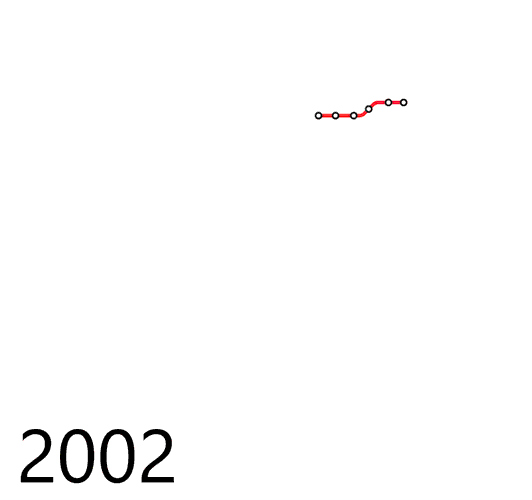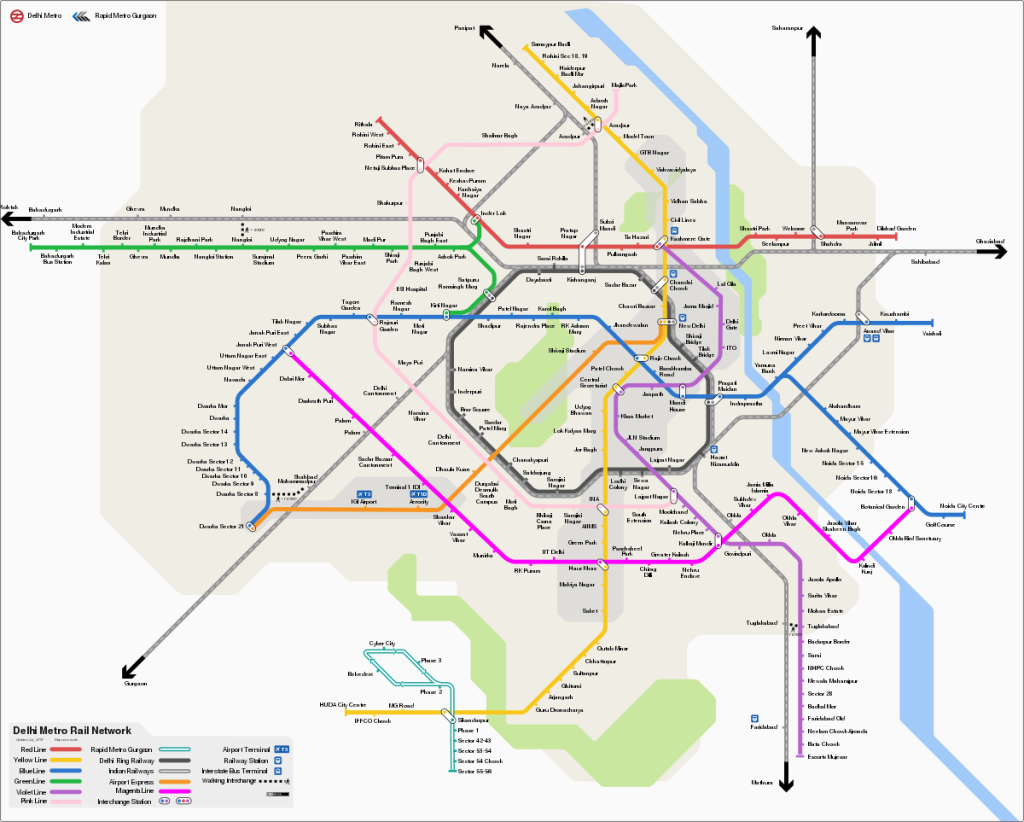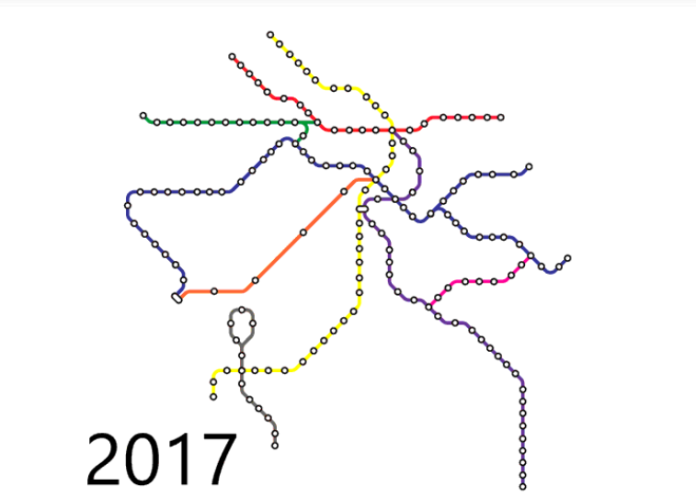India’s capital of Delhi is a booming metropolis of 25 million people known for its heavy pollution and congested, chaotic streets. However, in the last few decades, the city began rapidly implementing a rail transit network and soon its citizens had a low-cost, low-pollution transportation option. And the option was popular. In lightening speed, Delhi was a world leader in metro ridership, averaging 2.76 million daily boardings last year. Unfortunately, pollution remains a huge problem, but rapid transit at least provides a path forward to a low pollution future and an escape valve if governments must limit (or ban) driving on high pollution days.
A Wikipedia contributor by the name of Terramorphous was nice enough to render that tremendous transit growth in GIF map form (picture below). You can see the rapid transit network is birthed from nothing in 2002 and goes to one of the world’s most extensive systems in about 15 years. Such aggressive transit development is an inspiration to many cities grappling with their own transportation and climate woes.

Seattle feels like a transit leader among its American peer cities, but looking abroad we see there is so much more room to grow. As we face the Seattle Squeeze, we grapple with immediate necessities like getting many more miles of dedicated bus lanes and camera enforcement to ensure they’re respected by impatient motorists. But being a world class transit leader also means dreaming big and striving for an urban rapid transit system, not just a commuter-focused regional light rail spine with a couple spurs.

Sound Transit 3 will eventually bring our region’s light rail system to 116 miles in length, but some key routes will still not be completed–including routes Sound Transit has already studied, such as a light rail extension to White Center, a Ballard-to-UW subway, and extending the planned Ballard line north. Additionally, folks like Seattle Subway and yours truly have kicked around routes like the “Magenta Line” connecting the Aurora corridor with First Hill and the Central District. If Delhi can build a whole metro in 15 years, we can dream bigger too.
Doug Trumm is publisher of The Urbanist. An Urbanist writer since 2015, he dreams of pedestrian streets, bus lanes, and a mass-timber building spree to end our housing crisis. He graduated from the Evans School of Public Policy and Governance at the University of Washington in 2019. He lives in Seattle's Fremont neighborhood and loves to explore the city by foot and by bike.


